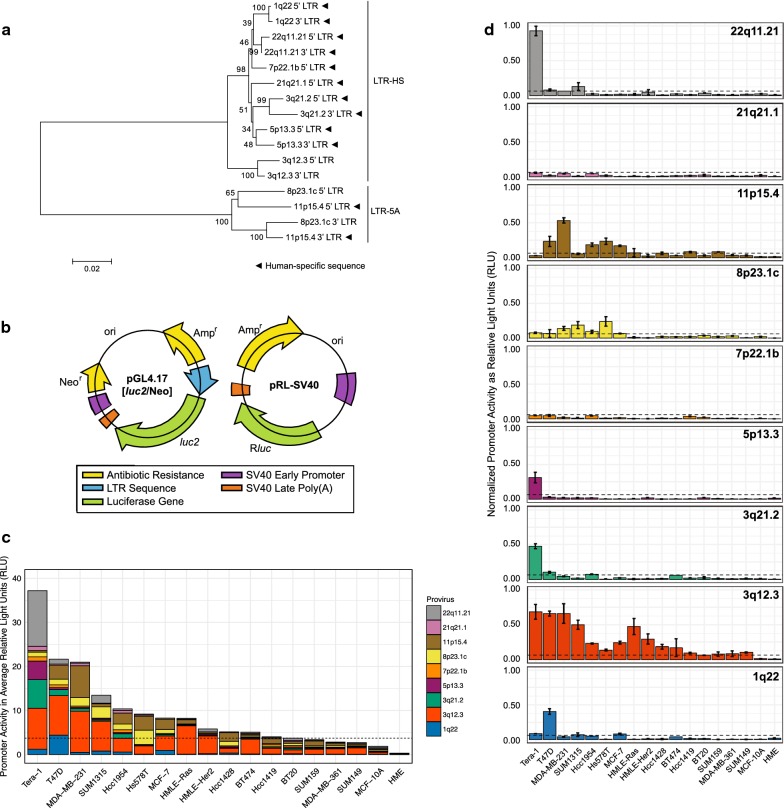Fig. 1.
HML-2 proviruses exhibit differential promoter activity in tumorigenic cells and negligible activity in immortalized HMEs. a Neighbor-joining tree displaying 5′ and 3′ LTR sequence relationship of the nine HML-2 proviruses used in this study. Bootstrap values are shown to the left of each node and scale is substitutions/site. LTR type (LTR-HS or LTR-5A) is shown to the right of the tree. Human-specific sequences are designated with a black triangle. b Schematic of the reporter constructs used in the dual-luciferase assay. Left, promoter-less firefly luciferase vector (pGL4.17[luc2/Neo]). Right, control Renilla luciferase vector (pRL-SV40). Direction of gene transcription is shown by arrows. Important gene regions are differentiated by colors and the names associated with those colors are displayed underneath. c, d Relative 5′ LTR promoter activity determined by dual luciferase assay in eighteen human cell lines. Data are organized by cell line in (c) and by provirus in (d). Promoter activity is displayed as relative light units (RLU) normalized against the internal control Renilla expression. Data in (d) are normalized against the highest expression value in the dataset. Statistical significance (dashed line, p < 0.05) was generated by ANOVA with Bonferroni’s multiple comparisons test and is based on comparisons to HME expression. All experiments were conducted in triplicate and data displayed as mean (c) or mean ± standard deviation (d)

